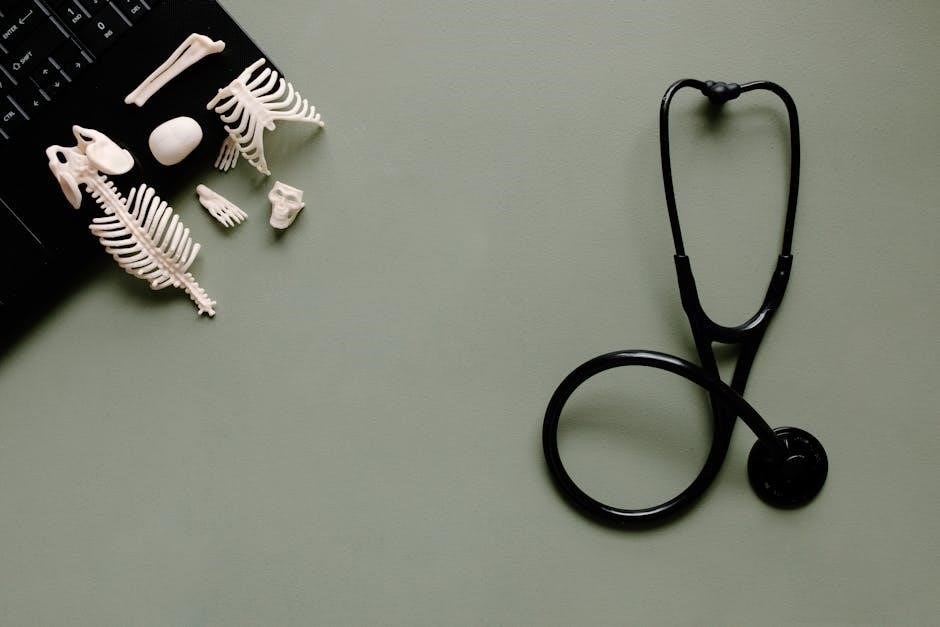
roper-logan-tierney model of nursing pdf
Download Roper Logan Tierney model of nursing pdf for UK healthcare, learn about this nursing framework at webmasterstarterkit
The Roper-Logan-Tierney model of nursing is a widely used framework, explained in various pdf resources, focusing on patient-centered care and activities of living to enhance nursing practice effectively always.
Overview of the Model
The Roper-Logan-Tierney model of nursing is a theoretical framework that provides a structured approach to nursing care, as outlined in various pdf resources. This model is based on the concept of activities of living, which are essential for maintaining daily life. The model assesses a patient’s ability to perform these activities, ranging from complete dependence to independence. The Roper-Logan-Tierney model is widely used in nursing practice, particularly in the UK, and is often referred to as a human needs model. It provides a comprehensive framework for nursing care, taking into account the physical, psychological, and social needs of patients. The model is also used in various healthcare settings, including hospitals, rehabilitation centers, and home care. By using this model, nurses can provide holistic, patient-centered care that addresses the unique needs of each individual; The model’s emphasis on activities of living enables nurses to develop effective care plans.

Conceptual Development of the Model
The model was developed by Nancy Roper, Winifred Logan, and Alison Tierney, based on their research and experience, creating a framework for nursing practice effectively always online.
Major Concepts and Brief Description
The Roper-Logan-Tierney model of nursing is based on several major concepts, including activities of living, which are the basic human needs that individuals have in order to survive and maintain their health. The model identifies 12 activities of living, such as breathing, eating, and drinking, and uses these activities as a framework for assessing and meeting the needs of patients. The model also takes into account the individual’s level of independence and dependence, and uses this information to develop a plan of care that is tailored to their specific needs. The model is widely used in nursing practice and is considered to be a useful tool for promoting patient-centered care and improving patient outcomes. The model is also flexible and can be applied in a variety of settings, including hospitals, community health centers, and home care settings. Overall, the Roper-Logan-Tierney model is a valuable resource for nurses.

Application of the Model in Practice
Nursing professionals apply the model in various healthcare settings to deliver patient-centered care effectively always using pdf resources and guidelines.
Activities of Living
The Roper-Logan-Tierney model of nursing focuses on 12 activities of living, including maintaining a safe environment, communicating, breathing, and eating, which are essential for patient care.
These activities are used to assess a patient’s independence and dependence, allowing nurses to provide individualized care.
The model emphasizes the importance of activities of living in promoting patient health and well-being, and nursing professionals use this framework to develop care plans that address the unique needs of each patient.
The activities of living are interconnected and interdependent, and nurses must consider the impact of each activity on the patient’s overall health and well-being.
By using the Roper-Logan-Tierney model, nurses can provide holistic, patient-centered care that addresses the physical, emotional, and social needs of patients, as outlined in various pdf resources and guidelines.
This approach to care has been shown to improve patient outcomes and enhance the quality of care provided.

Critique of the Model
The model has limitations and criticisms, including lack of cultural sensitivity and limited application in diverse healthcare settings, as discussed in various pdf resources and studies always;
Place within the Wider Body of Nursing Theory

The Roper-Logan-Tierney model of nursing is situated within the broader context of nursing theory, drawing on concepts from human needs and activities of living.
This placement is significant, as it informs the development of nursing practice and education, with the model being widely used in the UK and other countries.
The model’s focus on patient-centered care and holistic assessment is consistent with other nursing theories, such as Henderson’s model, and is reflected in various pdf resources and studies.
By considering the Roper-Logan-Tierney model within the wider body of nursing theory, nurses can gain a deeper understanding of its application and limitations, ultimately enhancing their practice and patient outcomes, as discussed in pdf resources and nursing literature always.
The Roper-Logan-Tierney model of nursing provides a framework for patient care, available in pdf resources, summarizing its significance and application in nursing practice effectively always online.
Place of the Model in the Face of Ongoing Challenges
The Roper-Logan-Tierney model of nursing, as outlined in various pdf resources, continues to play a vital role in addressing the complex healthcare needs of patients in diverse settings, including hospitals and community care.
The model’s emphasis on patient-centered care and activities of living enables nurses to provide holistic care, addressing the physical, emotional, and social needs of patients.
In the face of ongoing challenges, such as staffing shortages and limited resources, the Roper-Logan-Tierney model offers a framework for prioritizing care and allocating resources effectively.
By focusing on the activities of living, nurses can identify areas where patients require support and develop targeted interventions to promote independence and well-being;
The model’s flexibility and adaptability make it an valuable tool for nurses working in a range of settings, from acute care to rehabilitation and palliative care, and its relevance is evident in the numerous pdf resources available online.
Overall, the Roper-Logan-Tierney model remains a cornerstone of nursing practice, providing a foundation for delivering high-quality, patient-centered care in the face of ongoing challenges.
The model’s enduring relevance is a testament to its effectiveness in promoting positive health outcomes and improving the quality of life for patients and their families.
Its application in nursing practice continues to evolve, with ongoing research and development informing its use in diverse healthcare contexts.
As the healthcare landscape continues to change, the Roper-Logan-Tierney model will remain a vital component of nursing practice, guiding nurses in their efforts to provide compassionate, evidence-based care.
The model’s influence can be seen in the many pdf resources available, which provide a wealth of information on its application and implementation in nursing practice.
These resources offer a valuable starting point for nurses seeking to develop their understanding of the model and its role in promoting high-quality patient care.
By exploring these resources, nurses can deepen their knowledge of the Roper-Logan-Tierney model and its application in nursing practice, ultimately enhancing!
their ability to provide effective, patient-centered care in a range of healthcare settings, and the model will continue to be a valuable tool for nurses, as evident in the numerous pdf resources available, with .